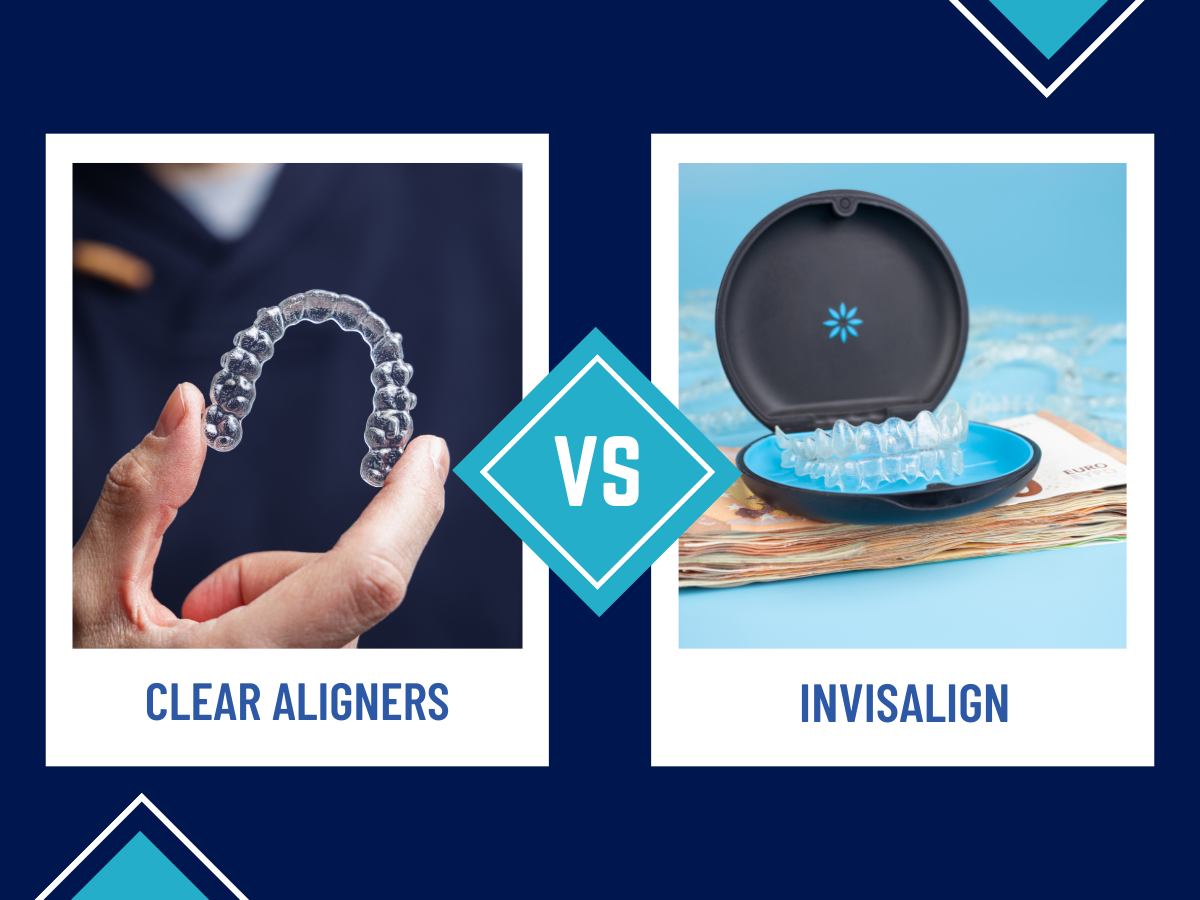Are you considering straightening your teeth but unsure whether to choose clear aligners or Invisalign? You’re not alone. With the rise in popularity of discreet orthodontic treatments in Coral Springs, many patients are left wondering which system will best suit their smile goals, budget, and lifestyle.
In this blog post, we’ll break down clear aligners vs Invisalign to help you make an informed decision. Whether you’re a teen, a busy professional, or someone looking to improve your oral health, South Florida Dental Center is here to guide you.
What Are Clear Aligners?
Clear aligners are transparent, removable trays designed to gradually shift your teeth into a better position. They’re custom-made using 3D imaging technology and are typically worn for 20–22 hours per day. Every few weeks, you’ll switch to a new set that continues the movement of your teeth.
Clear aligner treatment has become a popular alternative to metal braces due to their subtle appearance and ease of use. Many brands now offer these treatments, sometimes through mail-order services, making them accessible to a wider audience. However, the quality, supervision, and results can vary greatly.
What Is Invisalign?
Invisalign is a brand of clear aligners developed by Align Technology. Since its launch in the late 1990s, Invisalign has become the most recognized name in clear aligner therapy. It uses patented SmartTrack® material to improve comfort and predictability during treatment.
Unlike some generic clear aligner options, Invismalign is available only through certified dental professionals. At South Florida Dental Center, we provide in-office evaluations and digital scans to ensure your Invisalign trays fit precisely and work effectively.
Invisalign is suitable for mild to complex cases, from crowding and gaps to bite issues like overbite and underbite. Treatment plans are closely monitored by your dentist, ensuring a higher level of care and better outcomes.
Key Differences Between Clear Aligners and Invisalign
When comparing clear aligners and Invisalign, several important factors come into play. Here’s a breakdown to help you weigh your options:
| Feature | Clear Aligners (Generic Brands) | Invisalign |
| Provider | Often online/direct-to-consumer | In-office with dental supervision |
| Material | Varies by brand | SmartTrack® patented material |
| Treatment Complexity | Mostly for mild cases | Handles mild to complex cases |
| Supervision | Limited or remote | Regular in-person checkups |
| Cost | Typically lower | Higher but with more oversight |
| Customization | General fit | Precise 3D scanning and planning |
| Reliability | Varies greatly | Backed by decades of research |
Pros & Cons of Clear Aligners and Invisalign
Let’s take a closer look at the pros and cons of each option so you can better understand what might work best for you.
Clear Aligners (Generic Brands)
Pros:
- Lower upfront cost
- Easy to access (some can be ordered online)
- Discreet and removable
Cons:
- Less precise fit
- Minimal or no dental supervision
- Not ideal for complex cases
- Higher risk of errors without professional oversight
Invisalign
Pros:
- Custom treatment supervised by a dentist
- SmartTrack® material offers better comfort and results
- Treats a wider range of dental issues
- Advanced software for monitoring progress
Cons:
- Higher cost compared to generic aligners
- Requires in-office visits (but this means better care!)
- May require small attachments for best results
Which Is Right for You?
Choosing between clear aligners and Invisalign depends on your unique needs, preferences, and budget. Here’s a simple guide:
- Mild misalignment & low budget?: You might consider generic clear aligners, but be cautious of the lack of supervision.
- Moderate to severe alignment issues?: Invisalign is the safer choice. It’s ideal for comprehensive care and predictable outcomes.
- Concerned about progress monitoring?: Invisalign includes in-office visits to make sure everything’s moving as planned.
- Prefer convenience but want safety?: Invisalign strikes the right balance between flexibility and professional guidance.
At South Florida Dental Center, we recommend an in-person consultation to determine the best fit for your specific case. Every smile is different, and so is every treatment plan.
Frequently Asked Questions (FAQs)
1. Are clear aligners as effective as Invisalign?
Clear aligners can be effective for mild cases, but Invisalign is better suited for complex dental issues due to the precision and supervision it offers.
2. Is Invisalign more expensive than other clear aligners?
Yes, Invisalign often costs more, but that added investment goes into advanced materials, better fit, and personalized dental care.
3. Can I switch from clear aligners to Invisalign?
In some cases, yes. If clear aligners aren’t giving the results you need, your dentist can evaluate whether switching to Invisalign is a good solution.
4. How long does Invisalign treatment take?
On average, treatment takes 12 to 18 months, depending on the complexity of your case. Some patients may see results in as little as six months.
5. Do I have to wear them all day?
Yes. Both Invisalign and clear aligners need to be worn for 20–22 hours daily to be effective. You can remove them for eating and brushing.
6. Are Invisalign trays more comfortable?
Many patients find Invisalign’s SmartTrack® material more comfortable and easier to put on and remove than generic clear aligners.
Conclusion: Start Your Smile Journey with South Florida Dental Center
When it comes to clear aligners vs Invisalign, the choice ultimately depends on your dental needs and treatment expectations. While generic clear aligners might be a good starting point for minor corrections, Invisalign offers a higher standard of care and better outcomes for most patients.
Don’t leave your smile to chance. Let our expert team at South Florida Dental Center help you decide on the right path.
📞 Call us at (954) 569-5608 or visit our website to book your personalized consultation and take the first step toward a confident, healthy smile.

